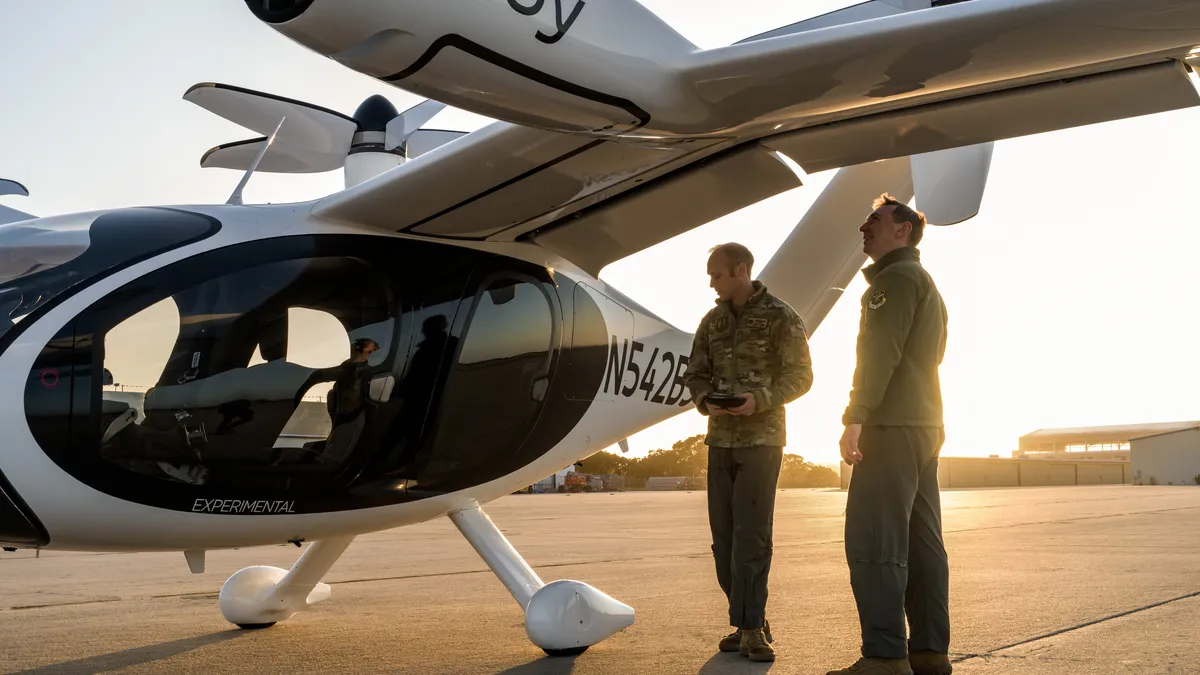Dive Brief:
- The Federal Aviation Administration released guidelines on May 3 for the future operation of air taxis in the nation’s airspace. The initiative looks to spur the development of electric takeoff and landing aircraft and other urban air mobility operations, such as cargo drones, between “locations not previously served or underserved by aviation,” the FAA said in the planning document.
- The FAA framework envisions eVTOL operations beginning at a low rate, flying existing routes and using infrastructure such as helipads and vertiports. But the FAA expects operations to increase over time, serving multiple routes, with the onset of automation and other advanced technologies.
- States and local governments are encouraged to plan for eVTOL infrastructure, the FAA said, noting that vertiports should be located to allow room for growth and “be properly linked to surface transportation” where possible.
Dive Insight:
The FAA’s guidance was widely anticipated after Federal Aviation Administrator Billy Nolen said in November to expect an implementation plan by May 2023 as eVTOL development moves forward. Archer Aviation unveiled its first production eVTOL aircraft in November, while Joby Aviation has been test-flying its prototype aircraft since January 2022.
“We’re pleased to see the FAA continue to lean into the adoption of eVTOL aircraft, in a manner that will ensure streamlined integration into the airspace, while evolving in a way that will best leverage the benefits of novel propulsion technologies,” a Joby Aviation spokesperson said in an email. “At Joby, we designed our aircraft to fit today’s airspace system and adapt to the future, and we're thrilled to see these policies coming into place after so many years of planning and collaboration.”
Industry analysts expect urban air mobility to take off rapidly. By 2030, McKinsey & Company projects that eVTOL operators will conduct more flights per day than the largest domestic airlines, and Deloitte expects eVTOLs to become common around urban areas in the next decade.












